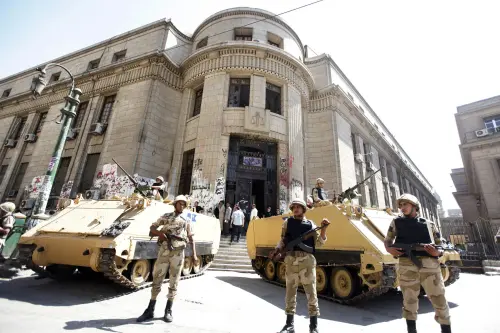Originally published with the title: Big Apple Pie
Secretary of Homeland Security Michael Chertoff makes a strong argument for why Washington, D.C. and New York will receive much less money from one key homeland security program this year than last year — but his explanation is ultimately not convincing. Rather than continue the acrimonious debate over how to spend this particular $800 million — only 2% of federal expenditures on homeland security and only 20% of the federal funds provided to states and localities — we need a broader discussion about the big picture. And here is where Mr. Chertoff needs to lead the way.
Secretary of Homeland Security Michael Chertoff makes a strong argument for why Washington, D.C. and New York will receive much less money from one key homeland security program this year than last year — but his explanation is ultimately not convincing. Rather than continue the acrimonious debate over how to spend this particular $800 million — only 2% of federal expenditures on homeland security and only 20% of the federal funds provided to states and localities — we need a broader discussion about the big picture. And here is where Mr. Chertoff needs to lead the way.
As the secretary explained in an impressive appearance at the Brookings Institution on June 1, New York, the D.C. area and several other cities should not necessarily feel penalized over this latest allocation of funds. First, the amount New York got last year was unusually high; the new allocation is a fair reflection of the average of the last three years. Second, this pot of money, in Mr. Chertoff’s mind, should be used to make investments to get all potential targets up to a reasonable basic level of preparedness.
It could simply be that other cities need the help more than New York and the D.C. area this year — or at least, that they made a better case for why they need the help right now. Third, there are other pots of money that the federal government provides states and localities; the significance of the urban area grant program should not be overemphasized. Finally, as the secretary underscored, this year’s allocation decisions do not prejudge future decisions. The Department of Homeland Security remains open to new arguments about why it should again change its distribution of funds in the future.
These are all fine points as far as they go. Mr. Chertoff’s lawyerly skills shine forth as he makes them. In listening, one is struck by how difficult it would be to argue against him in a court of law if he were representing the opposing side in a case.
But Mr. Chertoff is not a lawyer for one side; he is the nation’s leader in an extremely important enterprise at a time when further partisan acrimony over a core national security issue is the last thing the country needs. Rather than argue, he should educate. And to do so, it is important to get beyond myopia on this one grant program and take a broader perspective.
In fairness, the Bush administration has been generally right in the overall amount of money it has allocated to states and localities for homeland security in recent years. It has typically provided $4 billion to $5 billion a year out of a federal total of some $40 billion in homeland security funding. Political forces have pushed for much higher levels. But the administration has rightly argued that most first responder functions should continue to be funded by states and localities; homeland security should not be used as a guise to gain federal financing for preexisting activities that are not Washington’s responsibility.
In addition, some proposals for first responders — that most or all of the nation’s millions of fireman, police officers and emergency medical personnel have state-of-the-art chemical protection gear and interoperable radios, for example — are excessive. Such a “kitchen sink” approach could cost upward of $20 billion a year, according to one estimate. Spending that much primarily to prepare for the consequences of an attack is not the best use of homeland security dollars. If we are going to boost overall expenditure so much, it would be better to spend it on more prevention — to keep dangerous people out of the country (and help our allies track them down and arrest them when they are abroad), to secure dangerous materials before they fall into the wrong hands, to detect early signs of terrorist plots before they can be hatched. A few mobile command centers with interoperable communications, for example, are just as good a solution to most cities’ needs as interoperable radios for every single first responder.
But if $5 billion is the right general amount to spend on first responders and other state and local needs, $800 million for urban area grants is far too little a slice of that pie. The administration and Congress are to blame here.
Helping major metropolitan areas protect themselves is probably the most important activity this $5 billion in funding carries out each year. Dividing it up through a risk-based formula, as the urban grant program does, is also the right approach — even if any methodology that ranks the D.C. area low in relative risk among likely targets clearly needs work. We should fix the methodology and increase the funding by a factor of two for this program. No longer will Los Angeles have to compete against New York if we do so. Wyoming and West Virginia may get less funding as a result — since other types of programs that currently favor smaller states would have to be cut. But they are far less likely to be subject to catastrophic mass-casualty attack than the nation’s major urban centers. Since we cannot do everything, we must be judicious and efficient in how we allocate.
Also, rather than blame New York for a purportedly poor grant application, as some DHS officials have done this week, we should be praising the city for progress in homeland security efforts to date — and asking other cities to emulate the Big Apple. For example, it has created dedicated counterterror units in its police forces with hundreds of officers on board; no other big city has more than a couple dozen doing similar tasks, and most have none. These officers know their city, and work with the rest of their department to detect suspicious activity early on so any terrorist cells can be rolled up before they attack. Such police units can usually tell better than local FBI representatives who is casing which buildings, or who doesn’t belong at conventions on mosquito sprayers or fertilizer applicators (and might be trying to get their hands on technology usable in attacks).
Because DHS doesn’t seem to want to pay personnel costs, such units do not receive much attention or support when allocation decisions are made. That is regrettable. A better approach would either change the urban grant program to allow such ongoing costs to be partially covered by Washington, or create a new program to do so — perhaps a “COPS II” effort, modeled after the Clinton administration’s COPS program through which the federal government helped local police forces beef up their ranks for more general purposes.
Mr. Chertoff makes a number of powerful arguments to explain how DHS divvies up homeland defense dollars. He is right to hold the line on some areas of overall spending, right to think analytically about how to allocate funds, and right to have the courage to face down critics based on his convictions. But now he also needs a stronger message and a more effective overall program for how Washington should help states and cities better protect the country.
The Brookings Institution is committed to quality, independence, and impact.
We are supported by a diverse array of funders. In line with our values and policies, each Brookings publication represents the sole views of its author(s).



Commentary
Op-edHomeland Security Spending: Protecting Our Cities
June 3, 2006